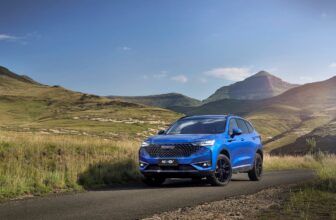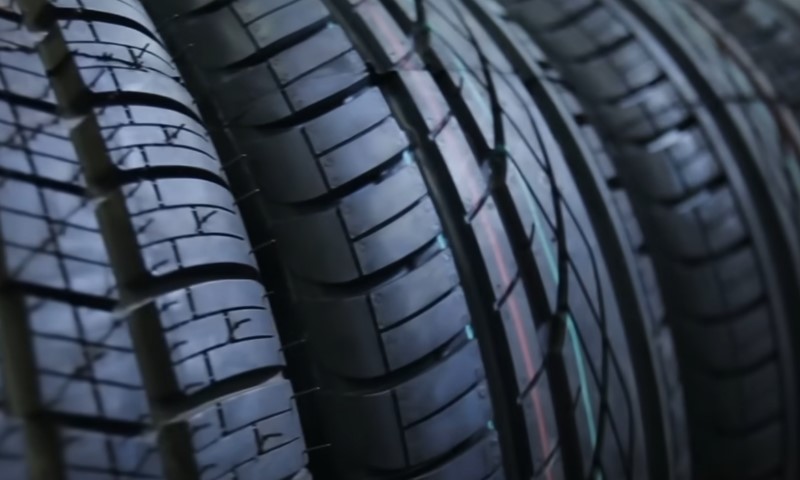
When you spend hours or even days on the road, tires become more than just round pieces of rubber. They’re your only contact with the pavement, and their design quietly decides how smooth, safe, and efficient your trip will feel.
Long-distance travel asks for stability, comfort, quietness, and consistent grip; qualities that come down to one key factor: tread pattern.
Let’s break down what tread patterns actually do, which types perform best when the miles start adding up, and what small details, like rotation rules or label ratings, make a real difference once you hit the open road.
Table of Contents
Why Tread Pattern Matters So Much on Long Trips
Long highway runs put tires under steady heat cycles, continuous flexing, and repetitive contact with rough asphalt. At high speed, every pattern design element affects:
- Heat management : A tire that runs cooler resists wear and rolling resistance.
- Water evacuation : Prevents hydroplaning when storms hit mid-journey.
- Noise and vibration : Impacts fatigue and long-term comfort.
- Fuel efficiency : Influenced by how easily the tread rolls and flexes.
Each pattern type handles those challenges differently, and that’s why the “best” pattern depends on where and how you travel.
For anyone looking to upgrade before their next big trip, the Hubtrac tyres shop from Austria offers touring and highway tires built to handle those long, hot stretches of asphalt efficiently.
What Long-Distance Driving Really Demands
Highway touring or cross-country driving is about predictable handling, minimal fatigue, and consistent performance hour after hour. There are three priorities that matter most.
1. Low Rolling Resistance
On a steady cruise, rolling resistance dictates how efficiently a tire rolls. Even small improvements add up over time. Research shows a 10% drop in rolling resistance can cut fuel consumption by roughly 1–2%. Over thousands of kilometers, that’s meaningful.
2. Wet-Weather Safety
Rain on asphalt can instantly change the friction between tire and surface. A good pattern channels water away from the contact patch to avoid hydroplaning.
Tread geometry, groove depth, and siping density all affect how confidently you can drive through storms without that floating sensation.
3. Comfort and Quietness
Few things are more draining than constant tire hum on a long day. Tire makers now use variable block pitches and computer-optimized groove spacing to disrupt rhythmic noise.
A pattern that runs quieter also tends to ride smoother, giving your body less to absorb over time.
The Main Tread Pattern Types Explained
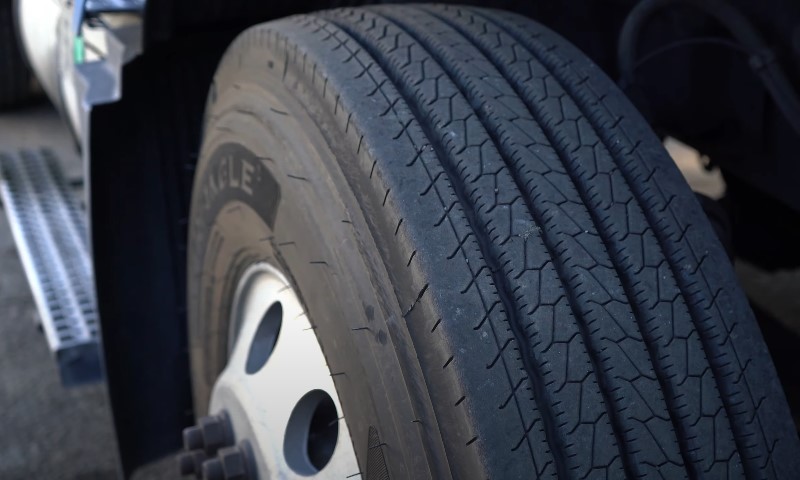
Source: YouTube/Screenshot, Most tires fit in one of three main categories
Tire designs vary across categories, but most long-distance options fall into three main types: symmetrical, directional, and asymmetric. Each has its own purpose.
Symmetrical Rib-Centric Patterns
Uniform ribs and grooves that repeat across the tread, mirrored from inside to outside.
Why They Work Well for Long-Distance Travel
- Offer smooth, predictable behavior and excellent directional stability.
- Tend to have the lowest rolling resistance, which improves fuel economy.
- Can be rotated in any direction, extending lifespan for high-mileage drivers.
Typical Downsides
Not as aggressive at clearing large volumes of water, so they can trail behind advanced wet-weather patterns in extreme rain.
Best for:
Drivers spending most of their time on dry or moderately wet highways who value quietness and even wear.
Directional “V” Patterns
Chevron or arrow-shaped grooves pointing forward.
Why They Shine on Long Wet Drives:
- Outstanding at pumping water away from the center, reducing hydroplaning risk at speed.
- Offer a solid sense of stability when conditions are changing fast.
Points to Keep in Mind
- Can only be rotated front-to-rear unless remounted on wheels, which adds a bit of maintenance planning.
- Some are tuned for sportier handling and may produce more road noise.
Best for:
Highway travelers who frequently face heavy rain or mountainous regions with strong runoff.
Asymmetric Patterns
Two distinct halves: the inner section handles water and slush with multiple grooves, while the outer section uses larger shoulder blocks for stability and cornering.
Why They’re Great All-Rounders
- Balance wet and dry grip effectively, often outperforming symmetrical designs in variable conditions.
- Lower pattern noise and more refined comfort, ideal for touring.
- Can be rotated side-to-side without remounting, simplifying maintenance.
Best for:
Drivers covering long distances through mixed climates: rain, dry stretches, even light snow, who want strong comfort and flexibility.
Matching Patterns to Real-World Travel Scenarios
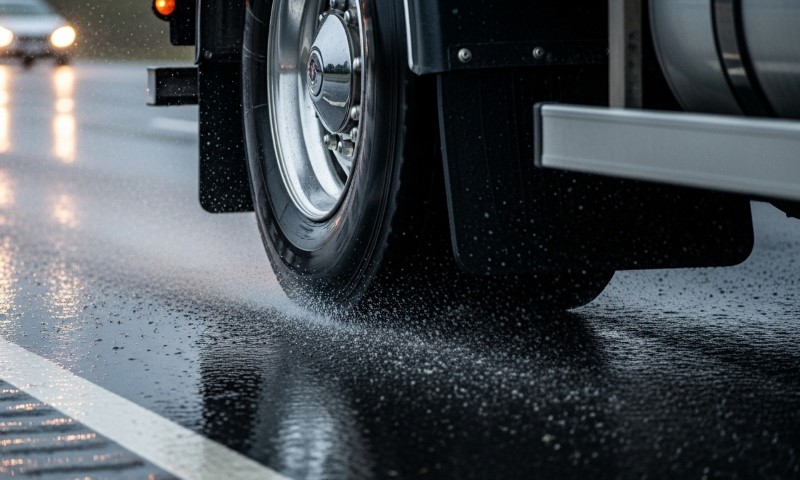
Use tires with directional or asymmetric treads on wet roads
Not all long-distance routes are equal. Think about where you spend most of your time.
| Scenario | Recommended Pattern | Why It Helps |
| Mostly dry highways | Symmetrical or asymmetric rib-centric | Calmer steering, improved fuel economy, long even wear. |
| Frequent heavy rain | Directional V or water-channeled asymmetric | Strong water evacuation, lower hydroplaning risk. |
| Mixed climates (spring and fall) | Asymmetric all-season touring | Good balance of comfort, quietness, and wet grip. |
| Light-truck or van highway use | Rib-type highway tread | Runs cool, tracks straight, wears evenly at high mileage. |
Tread Depth and Hydroplaning
Even a perfect tread pattern can’t perform if the grooves are worn shallow. Tread depth directly affects how well water can escape beneath the tire.
- Tests by TyreSafe and MIRA found that wet braking distances increase up to 44% when tread wears down from 3 mm to the 1.6 mm legal minimum.
- Continental engineers measured that new tires can disperse around 30 liters of water per second at 80 km/h, but once the tread reaches low depth, that number plummets.
What to Do Before a Long Trip
- Measure tread depth in the center and shoulders. Irregular wear can hide danger spots.
- Replace early , around 3–4 mm remaining tread, if a long highway run could wear them further. Wet stopping power and hydroplaning margins drop fast after that.
Rolling Resistance and Range
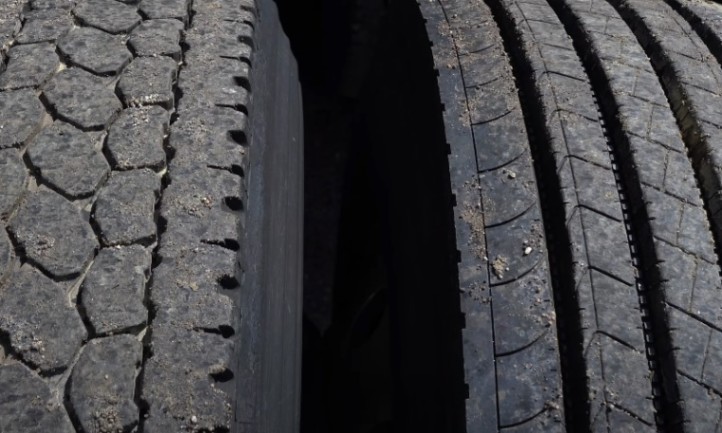
Source: YouTube/Screenshot, Reducing rolling resistance can improve fuel efficiency
Rolling resistance is the quiet thief of fuel and energy. It’s the force that resists motion when your tires deform against the road surface. Long-distance drivers benefit the most from reducing it.
How It Affects the Economy
- A 10% reduction can yield around 1–2% better fuel efficiency for passenger cars.
- Electric vehicles see similar gains in range, which can mean an extra 10–15 kilometers per charge.
What Determines It
- Rubber compound elasticity (called hysteresis).
- Tread block stiffness and design.
- Sidewall structure.
- Tire pressure.
Tip: Choose a tire with a good Rolling Resistance class (A or B on the EU label) , and keep it properly inflated. An underinflated tire can erase label advantages almost instantly.
Comfort and Noise Over the Long Haul
Noise fatigue is real. Hours of droning frequencies from the road can wear a driver down mentally. Modern touring tires use variable pitch sequencing , meaning tread blocks are slightly different in size and placement. That spreads out resonance frequencies, cutting drone without sacrificing grip.
In independent 2024 touring tire tests, asymmetric patterns consistently scored higher on comfort and cabin quietness compared to performance-focused directional tires.
Brands use simulation tools to predict tread impact forces and phase shifts that lower pass-by noise, and it works. You can literally hear the difference after a few hundred kilometers.
Rotation Rules Before You Hit the Road
Tire rotation keeps wear even and extends lifespan, but how you do it depends on your tread pattern.
| Pattern Type | Rotation Method | Special Notes |
| Symmetrical | Cross or diagonal rotation (any position) | Simplest pattern to manage. |
| Asymmetric | Side-to-side or front-to-rear | Keep “Outside” marking on the outer sidewall. |
| Directional | Front-to-rear only (unless remounted) | Must maintain arrow direction for correct water evacuation. |
A quick check of your tire sidewall before rotation saves you from reduced traction and unwanted noise.
When You Drive a Van or Light Truck
Commercial vehicles see the same highway conditions but with heavier loads and higher operating temperatures. That changes the ideal pattern slightly.
Rib-type highway designs dominate free-rolling positions (like steer or trailer axles) because they:
- Track straight at high speed.
- Run cooler, extending tread life.
- Minimize rolling resistance.
More aggressive block or traction treads are used only where grip on loose or wet surfaces matters, such as drive axles or regional mixed-service routes. For long, dry highway delivery cycles, ribbed highway patterns are quieter and last longer.
How to Use Tire Labels and Tests When You Shop
Both the EU and U.S. systems provide standardized information that helps filter good long-distance candidates.
EU Tyre Label (Regulation 2020/740)
| Category | What to Look For | Why It Matters |
| Rolling Resistance | A or B | Saves fuel and extends EV range. |
| Wet Grip | A or B | Shorter braking distance on wet roads. |
| External Noise | A or B class and low dB rating | Indicates quieter operation for long drives. |
Each label includes a QR code linking to the EPREL database , where you can confirm details for that exact tire model.
U.S. Ratings and Data
In the United States, the NHTSA provides comparative grades under the UTQG system for treadwear, traction, and temperature resistance.
Websites like Tire Rack publish detailed tests showing noise levels, wet braking, and ride comfort; helpful when picking between touring tires that seem nearly identical on paper.
When labels show small performance gaps, pick based on your typical route and climate instead of chasing one top score.
Real Patterns Seen in Testing
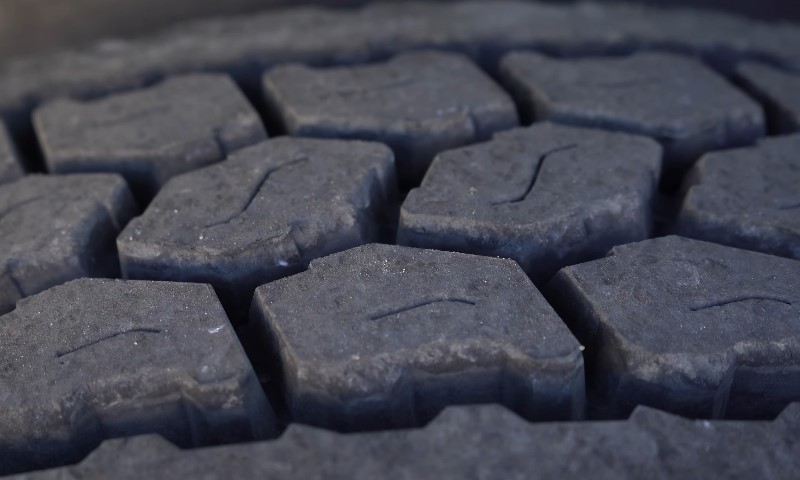
Source: YouTube/Screenshot, Traction is not everything, but it is important
Recent touring tire comparisons across North America and Europe highlight a few consistent takeaways:
- The difference between top-tier touring tires is often about noise and ride quality , not pure traction numbers.
- Ultra-high-performance all-season tires grip well, but they often sacrifice comfort and tread life.
- In multi-state or cross-country drives, tires tuned for long-wear touring often deliver a calmer, more efficient experience.
Maintenance Moves That Pay Off on Long Trips
Even with the right tread pattern, the way you care for your tires determines how they perform across hundreds or thousands of kilometers.
- Check pressure cold before driving. Use the door-jamb spec, not a guess.
- Adjust for temperature swings – a 10°C change alters pressure by roughly 0.1 bar.
- Rotate as per your pattern type every 8,000–10,000 km.
- Inspect for uneven wear – feathering or cupping means an alignment check is due.
- Replace early if tread hits 3–4 mm before rainy months.
- Avoid long parking periods under heavy load , as flat-spotting can start.
These small habits protect both your investment and your safety margin.
FAQs
A Quick Cheat Sheet
| Your Priority | Best Pattern Type | Main Benefit |
| Fuel economy and smooth tracking | Symmetrical or asymmetric rib-centric | Lower resistance, calmer ride. |
| Frequent storms or wet highways | Directional V or water-biased asymmetric | Clears water quickly, stays stable in rain. |
| Varied climates and quiet comfort | Asymmetric touring | Consistent wet/dry grip, low noise. |
| High-mileage light truck use | Rib highway pattern | Cool running, even wear, quieter for long hours. |
The Bottom Line
The perfect tire for long-distance driving is about balance. Choose touring or highway-biased tires with symmetrical or asymmetric rib-centric patterns if you want calm tracking, fuel savings, and a quieter ride.
For routes soaked in rain or lined with puddles, a directional V pattern or a water-optimized asymmetric tread provides that crucial hydroplaning resistance.
Keep tread depth above 3–4 mm , rotate according to your pattern type, and use tire labels or independent tests to confirm real-world performance.
A tire that stays stable, quiet, and efficient mile after mile makes every trip smoother, safer, and far less tiring. When you get those details right, the road ahead feels like it was built just for you.






